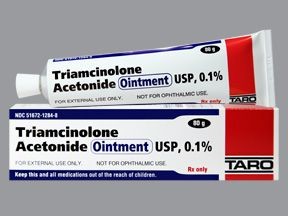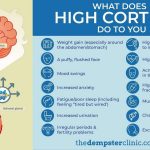
Contents
- 1 Side Effects of Nasacort AQ (triamcinolone acetonide)
Side Effects of Nasacort AQ (triamcinolone acetonide)
Nasacort AQ (triamcinolone acetonide) is a corticosteroid nasal inhaler-spray used to relieve runny nose symptoms. Corticosteroids are hormones produced by the adrenal glands that suppress inflammation and immune responses.
Nasacort AQ provides relief from allergy symptoms such as:
- allergy-induced watery nasal discharge (rhinorrhea),
- nasal congestion,
- postnasal drip,
- sneezing, and
- itching of the throat.
Approximately 50% of Nasacort AQ is absorbed into the blood. A beneficial response is usually noted within a few days but can take up to 4 weeks.
Common side effects of Nasacort AQ include:
- nasal irritation and itching,
- increased cough,
- nausea or vomiting,
- sore throat,
- nasal congestion,
- sneezing,
- nasal burning,
- bloody discharge,
- nasal dryness,
- dizziness, and
- watery eyes.
Serious side effects of Nasacort AQ include:
- nasal septal perforation,
- oral or nasal fungal infections,
- growth suppression in children,
- glaucoma,
- cataracts, and
- decreased cortisol production by the adrenal glands.
No drug interactions have been described with Nasacort AQ.
Serious complications, including cleft palate and stillbirths, have been reported with oral corticosteroid use during pregnancy.
- It is unknown if the small amounts of corticosteroids in the blood from intranasal use of Nasacort AQ carry the same risk.
- Nasacort AQ use during pregnancy should be avoided unless the physician believes the therapeutic benefit justifies the potential risk to the fetus.
It is unknown if Nasacort AQ accumulates in breast milk. Other corticosteroids are excreted in breast milk.
- The effects on the child, if any, are unknown.
- Consult your doctor before breastfeeding.
What are the important side effects of Nasacort AQ (triamcinolone acetonide)?
The most common side effects of triamcinolone acetonide nasal inhalation are:
- nasal irritation and itching,
- increased cough,
- nausea or vomiting,
- sore throat,
- nasal congestion,
- sneezing,
- nasal burning,
- bloody discharge, and
- nasal dryness.
Other reported adverse effects of intranasal triamcinolone acetonide include headache, dizziness, and watery eyes.
Serious side effects that may occur include nasal septal perforation, oral or nasal fungal infections, growth suppression in children, glaucoma, cataracts, and decreased cortisol production by the adrenal glands.
Nasacort AQ (triamcinolone acetonide) side effects list for healthcare professionals
Systemic and local corticosteroid use may result in the following:
- Epistaxis, Candida albicans infection, nasal septal perforation, impaired wound healing
- Glaucoma and Cataracts
- Immunosuppression
- Hypothalamic-pituitary-adrenal (HPA) axis effects, including growth reduction
Clinical Trials Experience
- Clinical trials cannot be compared directly. Adverse reaction rates observed in the clinical trials of a drug may not reflect those in clinical practice.
- In controlled trials, 1394 patients were treated with Nasacort AQ Nasal Spray for an average of 19 days.
- In a long-term, open-label study, 172 patients received treatment for an average of 286 days.
- Adverse reactions from adult and adolescent patients 12 to 17 years of age receiving Nasacort AQ Nasal Spray 27.5 mcg to 440 mcg once daily are summarized in Table 1.
- In clinical trials, nasal septum perforation was reported in one adult patient who received Nasacort AQ Nasal Spray.
Table 1 : Adverse drug reactions > 2% and greater than placebo with Nasacort AQ Nasal Spray 220 mcg treatment in studies in adults and adolescents 12 years and older
| Adverse reaction | Placebo (N=962) % |
Nasacort AQ 220 mcg (N=857) % |
| Pharyngitis | 3.6 | 5.1 |
| Epistaxis | 0.8 | 2.7 |
| Cough increased | 1.5 | 2.1 |
| Coding dictionary for adverse events is Coding Symbols for Thesaurus of Adverse Reaction Terms (COSTART). | ||
- 474 children 6 to 12 years of age were studied in 3 double-blind, placebo-controlled clinical trials.
- Adverse reactions from 2 studies in children 4 to 12 years of age receiving Nasacort AQ Nasal Spray 110 mcg once daily are summarized in Table 2.
Table 2 : Adverse drug reactions > 2% and greater than placebo with Nasacort AQ Nasal Spray 110 mcg treatment in US studies in patients 4 to 12 years of age
| Adverse reaction | Placebo (N=202) % |
Nasacort AQ 110 mcg (N=179) % |
| Flu syndrome | 7.4 | 8.9 |
| Cough increased | 6.4 | 8.4 |
| Pharyngitis | 6.4 | 7.8 |
| Bronchitis | 1.0 | 3.4 |
| Dyspepsia | 1.0 | 3.4 |
| Tooth disorder | 1.0 | 3.4 |
| Coding dictionary for adverse events is Coding Symbols for Thesaurus of Adverse Reaction Terms (COSTART). | ||
- 474 children 2 to 5 years of age were studied in a 4-week double-blind, placebo-controlled clinical trial.
- No patient discontinued due to a serious adverse event. Adverse reactions from the single placebo-controlled study in children 2 to 5 years of age receiving Nasacort AQ Nasal Spray 110 mcg once daily are summarized in Table 3.
Table 3 : Adverse drug reactions > 2% and greater than placebo with Nasacort AQ Nasal Spray 110 mcg treatment in children 2 to 5 years of age
| Adverse reactions | Placebo (N=238) % |
Nasacort AQ 110 mcg (N=236) % |
| Headache | 4.2 | 5.5 |
| Pharyngolaryngeal pain | 4.2 | 5.5 |
| Epistaxis | 5.0 | 5.1 |
| Nasopharyngitis | 3.8 | 5.1 |
| Abdominal upper pain | 0.8 | 4.7 |
| Diarrhea | 1.3 | 3.0 |
| Asthma | 2.1 | 2.5 |
| Rash | 1.7 | 2.5 |
| Excoriation | 0.0 | 2.5 |
| Rhinorrhea | 1.7 | 2.1 |
| Coding dictionary for adverse events is Medical Dictionary for Regulatory Activities terminology (MedDRA) Version 8.1 | ||
- In the event of accidental overdose, an increased potential for these adverse experiences may be expected, but acute systemic adverse experiences are unlikely.
Post-Marketing Experience
In addition to the adverse drug reactions reported during clinical studies and listed above, the following adverse reactions have been identified during post-approval use of Nasacort AQ Nasal Spray.
Reactions reported during post-marketing experience include:
- nasal discomfort and congestion,
- sneezing,
- alterations of taste and smell,
- nausea,
- insomnia,
- dizziness,
- fatigue,
- dyspnea,
- decreased blood cortisol,
- cataract,
- glaucoma,
- increased ocular pressure,
- pruritus,
- rash, and
- hypersensitivity.
What drugs interact with Nasacort AQ (triamcinolone acetonide)?
No reported drug interactions in the prescribing information.
Summary
Nasacort AQ (triamcinolone acetonide) is a corticosteroid nasal inhaler-spray used to relieve runny nose symptoms. Common side effects of Nasacort AQ include nasal irritation and itching, increased cough, nausea or vomiting, sore throat, nasal congestion, sneezing, nasal burning, bloody discharge, nasal dryness, dizziness, and watery eyes. Nasacort AQ use during pregnancy should be avoided unless the physician believes the therapeutic benefit justifies the potential risk to the fetus. It is unknown if Nasacort AQ accumulates in breast milk.
Nasacort AQ (triamcinolone acetonide) is a corticosteroid nasal inhaler-spray used to relieve runny nose symptoms. Common side effects of Nasacort AQ include nasal irritation and itching, increased cough, nausea or vomiting, sore throat, nasal congestion, sneezing, nasal burning, bloody discharge, nasal dryness, dizziness, and watery eyes. Nasacort AQ use during pregnancy should be avoided unless the physician believes the therapeutic benefit justifies the potential risk to the fetus. It is unknown if Nasacort AQ accumulates in breast milk.


